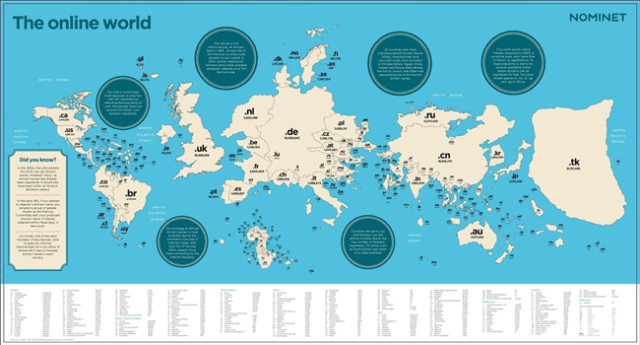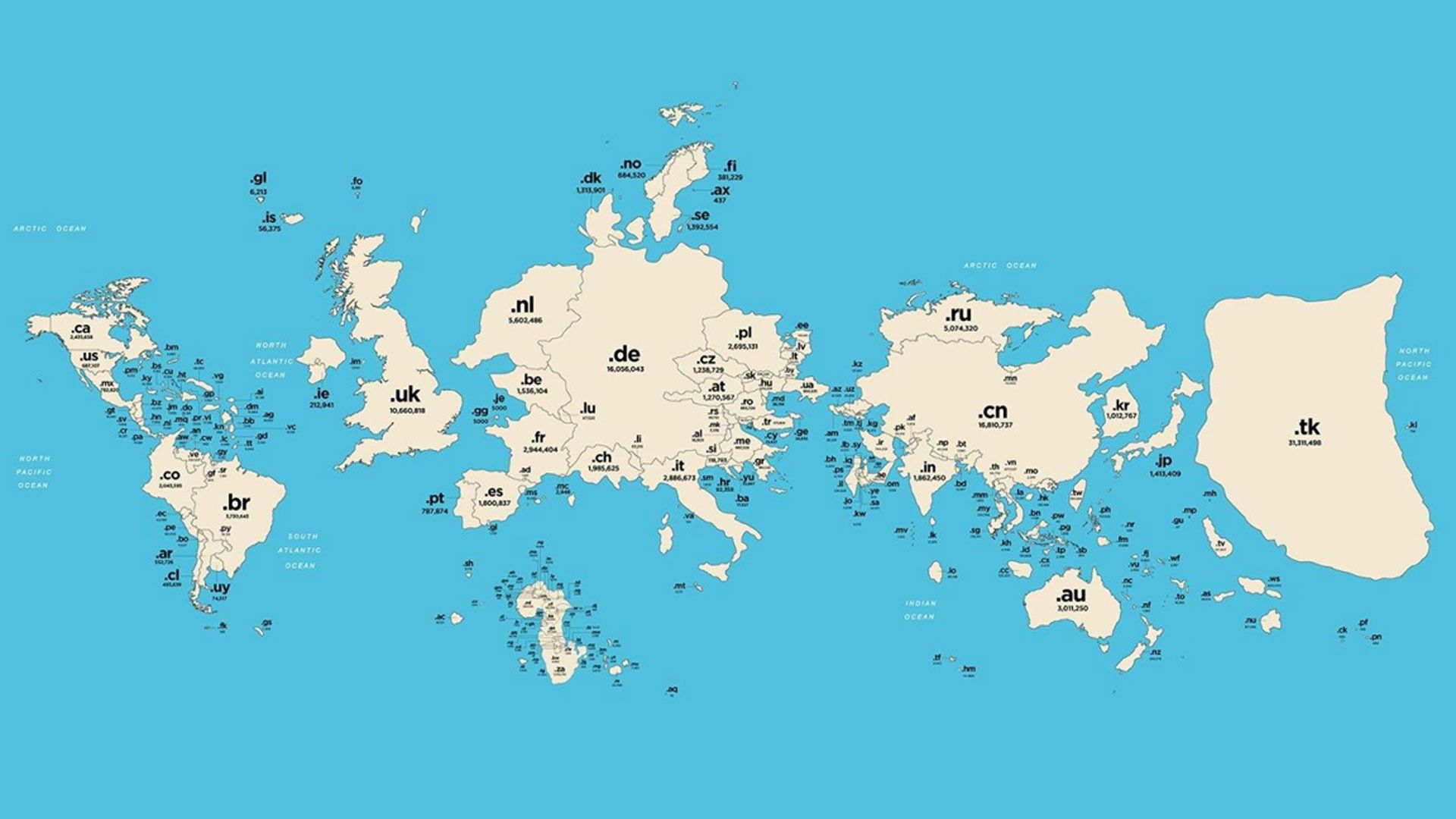Before 1985 the virtual world was yet an uncharted space, an aerea full of potential but devoid of activity. Then in 1985, the online world has been permanently linked to the physical world. This happened when it was agreed that each country has to own its piece of virtual space, encapsulated in a two-letter code within the Domain Name System. Thirty years later, the online world counts 3.2 billion "citizens", Internet users. But like our cities transformed the natural environment, the online domains shaped the virtual landscape.
 Click on the image for the full-size version
Click on the image for the full-size version
Although the online world map shows many similarities with the real world, some huge discrepancies are evident. Why are the USA so small? Why is Europe so big? Where did that huge landmass called .tk come from?
The main factors that influence the size of a country's virtual equivalent are: level of Internet infrastructure, Internet usage, e-commerce and online innovation. Of course the USA are not lacking these conditions, yet there are few registrations under .us, the official country-code domain. The explanation is simple, from the mid 1990s everyone was able to acquire a .com code, which was originally intended only for commercial entities. Nowadays there are around 123 million registrations under .com, making it the most common domain worldwide.
As the .com doesn’t refer to a country it doesn’t show on the map. For that reason, and also because most European countries were early Internet adopters, Europe seem comparatively big in the online world map.
But then how about .tk? .tk refers to the South Pacific island of Tokelau, with a population of 1.400. Tokelau’s .tk is the world’s largest country-code domain with 31 million registrations. This anomaly is due to a rather peculiar operating model. In 2000 Dutch entrepreneur Joost Zuurbier took inspiration from the business model of Hotmail, which makes money with advertisements by providing a free e-mail service. He asked himself if that business model would also work for providing free domains. And so some time later, the unknown island, which didn’t even have a reliable source of electricity, became the world's biggest online country.
Will the online world map ever become more relevant to us than the real world map? In case you were wondering, Antarctica also has its own domain name and 75 native websites in total. So you don’t have to worry for the real Antarctica to melt away; there will always be a virtual Antarctica, which probably has a more comfortable climate anyway.
Source: Nominet

Share your thoughts and join the technology debate!
Be the first to comment